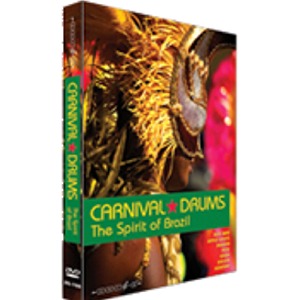
$120.95
Manufacturer's Code:ZG150
In Stock - This product usually ships next day.
A
serious discount available for this item - details can be found at checkout.

Zero G Carnival Drums consists of both Rex2, Acidized Wavs & AIFF Apple Loops, and multi-layered EXS 24, Halion, Kontakt & NN-XT sample hits. You can combine expertly performed loops with your own keyboard or pad-triggered patterns. Because the loops and hits are from the same drums, players, mics, mixes and venue, they will blend perfectly in a project.
You get over 2000 samples and 1.4Gb of the most exciting sounds of the Brazilian carnival. Zero G gathered together 10 professional Brazilian percussionists who play each year at the Rio Carnival and recorded them in a state of the art studio using close-mics, stereo overheads and distant stereo room mics to capture the exhilaration of the performances. And because each of the 10 drummers played the same drum and rhythm in unison, mixed loops with 6 different drum parts have the sound and force of 60 carnival drummers.
All the rhythms were performed by 10 professional Brazilian percussionists who play every year at the Rio Carnival. They was recorded in a modern theatre with excellent, lively acoustics thanks to polished wooden floors and huge adjustable acoustic curtains. Each drum was closed-miked and stereo overheads and distant stereo room mics were used to capture the ambience. Because each of the 10 drummers played the same drum and rhythm in unison, mixed loops with 6 different drum parts have the sound and force of 60 carnival drummers.
There are three slower patterns with a laid back groove, Samba Reggae, Maxixe and Samba Rock, all typical of Salvador, and Bahia from NE Brazil. The other 9 rhythms are all faster and typical of Rio de Janeiro: Axé, Samba Um, Dragões, Samba Dois, Samba Torcida Break Um, Samba Torcida Break Dois, Samba Tres, Samba Quatro and Samba Torcida Break Tres. Torcida here means something like 'audience participation' and so these 'Torcida Breaks' are the moment in the carnival that the rhythm breaks down and draws the audience to cheer and clap along.
For maximum usability the loops have been organized several ways - there are loops with only individual drum parts (e.g. Caixa-only loops) and there are ensemble performances with all parts of the Samba drum orchestra playing together. There are also recordings from different mic positions (close, overhead and room) where you can choose one or create your own mixes by stacking up the different mic channel loops of the same rhythm in your sequencer and making your own mix. And if you don't need this level of detail there is also a whole set of ready-to-go percussion ensemble mixes.
For each type of loop (Wav, Rex2 and Apple) there are two master folders named 'Individual Parts' and 'Full Mixes'. 'Individual Parts' contains only loops of one particular type of drum - e.g. Caixa-only loops or Pandeiro-only loops. 'Full Mixes' contains loops with all different types of drums playing together in a full percussion ensemble arrangement.
You can use this library in several ways. You could quickly drop the Ready to Go Mixed Loops straight in, or you can go through different mic channels to find the ideal sound. Or if you choose to delve deeper you can mix multiple mic positions to get an ideal blend. Using the multi-layered hits you can step-program your own beats or trigger live from a keyboard or pads. And by using both loops and hits together you can combine the realism of the loop performances with the flexibility of programmed beats.
Zero G Carnival Drums Used:
- Surdo de Primeira: This is the largest surdo (bass drum),
and provides the primary beat that the listener concentrates on. The singers
are guided by this surdo.
- Surdo de Segunda: This is the response to the surdo de
primeira. It sustains the samba rhythm while the Surdo de Primeira is at
rest
and is its counterpoint.
- Surdo de Corte (Surdo de Terceira): A type of tuned
floor-tom played with the hands, it chimes in between the other two (a
little
before the Surdo de Segunda).
- Caixa: Pronounced 'kay-sha', a type of snare drum worn on
a shoulder strap. This is what gives character to the samba.
- Repinique: Pronounced 'repineeki'. A two-headed tuned
metal drum worn on a shoulder strap, played with either two sticks or one
stick and a hand.
- Tamborim: A small, high-tuned handheld drum with a very
short, tight sound, in samba it is played with a bundle of nylon rods and
is rapidly flipped around to create ghost notes.
- Agogô: A hand-held two-bell instrument similar to a
cowbell and played with a stick.
- Timbal: A large floor-standing conical drum which is a
bit like a conga but with a more deep and forceful sound.
- Pandeiro: A large, deep tambourine played with the hand.


